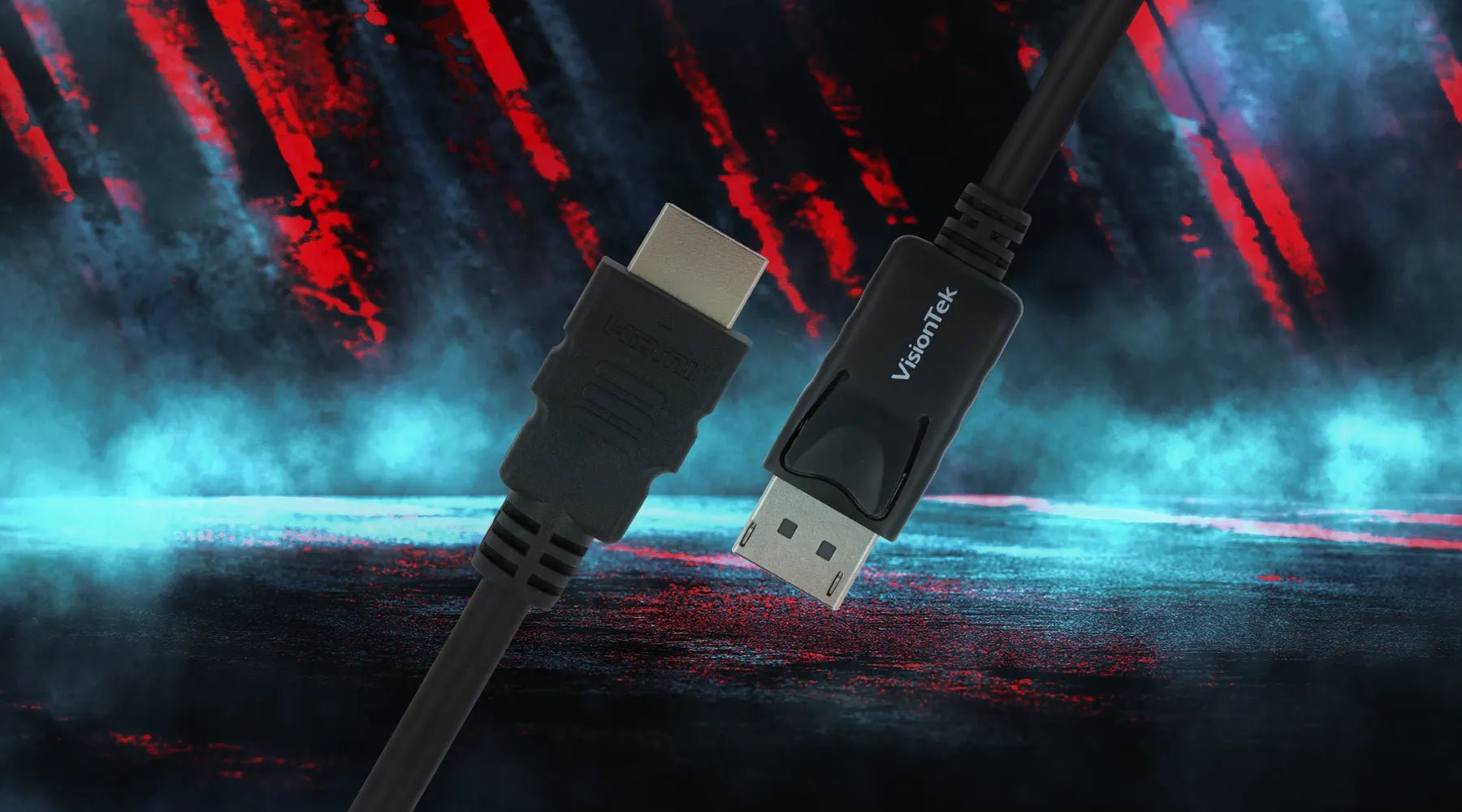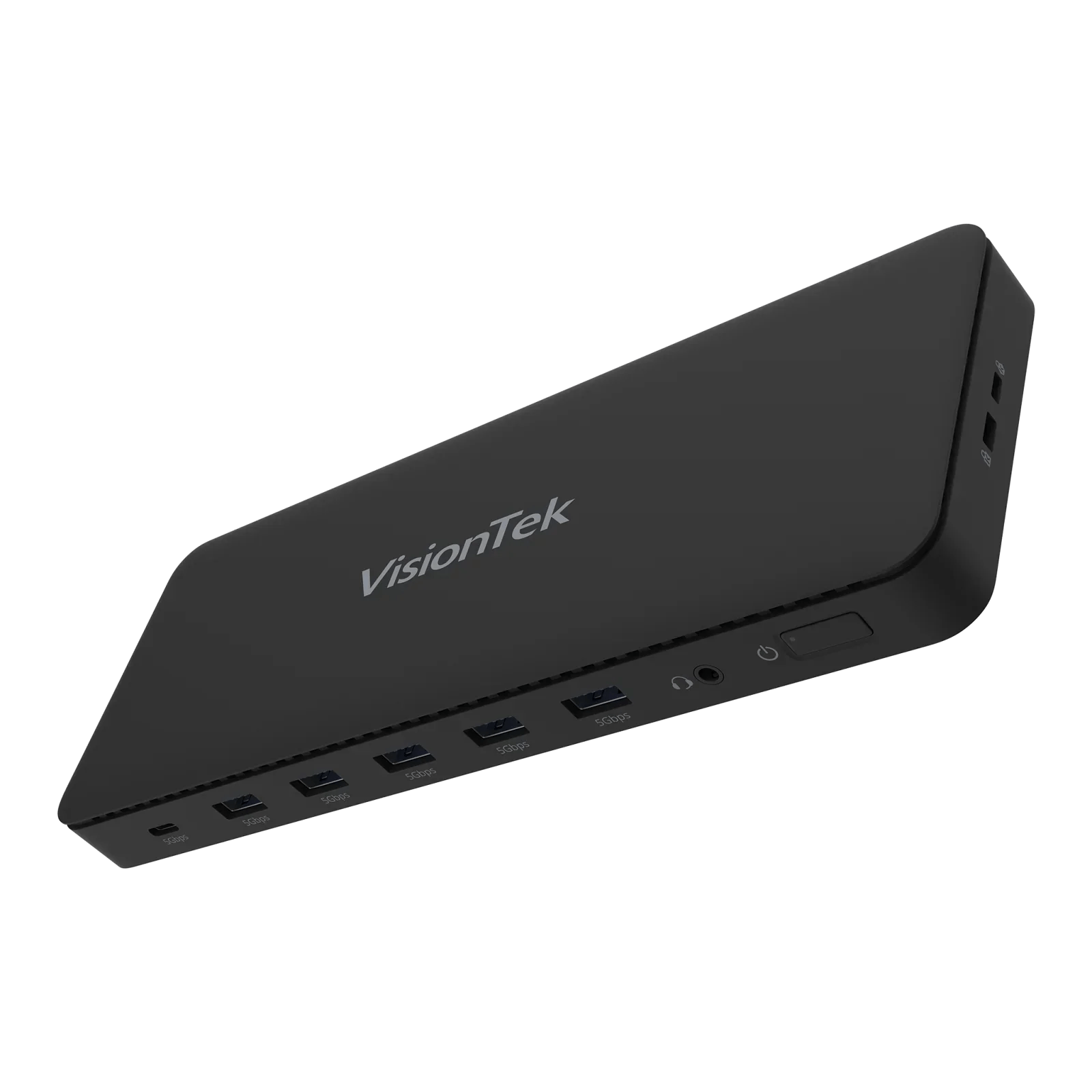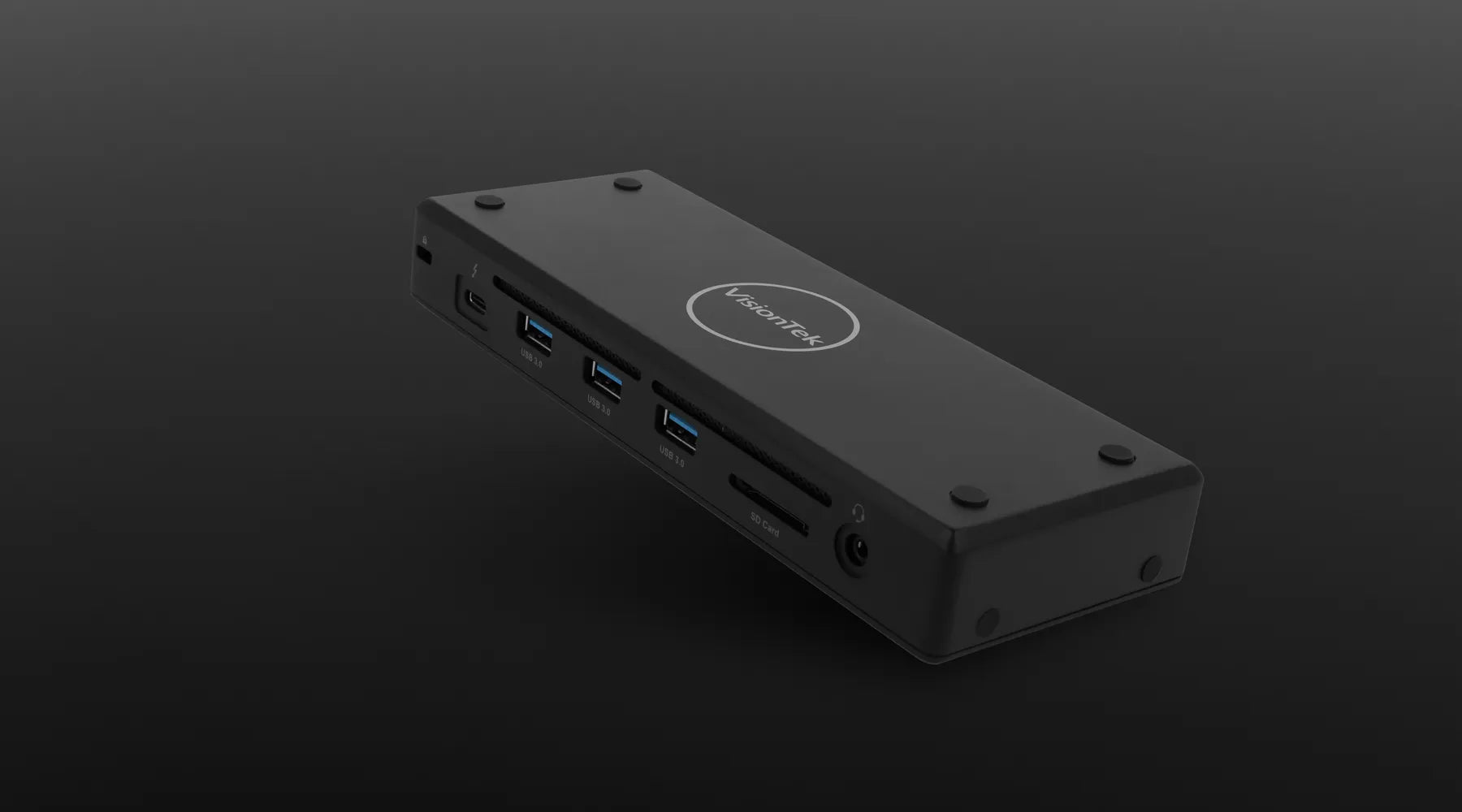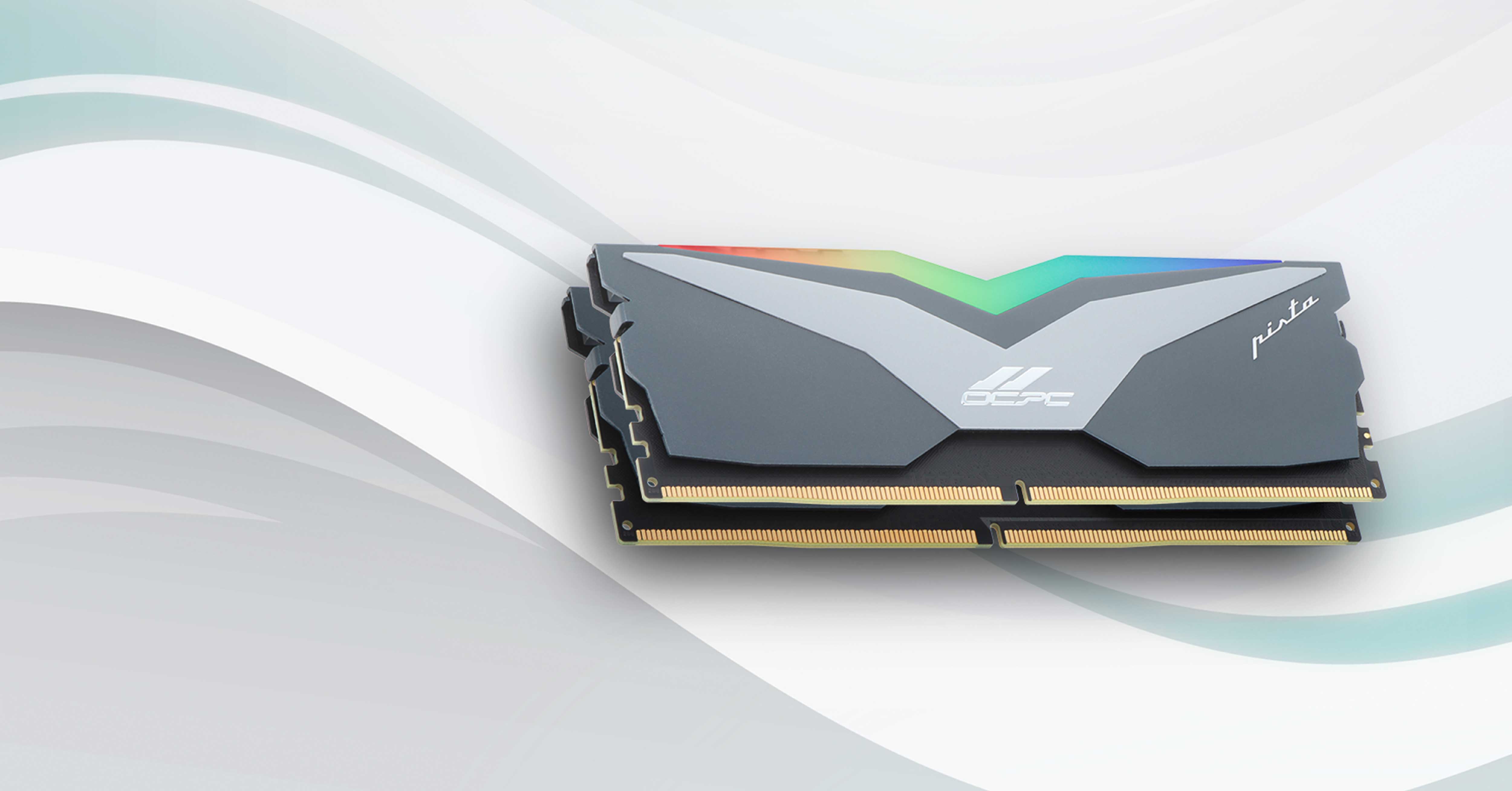A classic tech battle if there ever was one, DisplayPort and HDMI audio/video signal transfer superiority is a hotly debated subject with some clear takeaways if you dig deep enough into the details. Recently, we covered the in-depth features that comprise both the HDMI and DisplayPort protocols including a brief history of their various versions and capabilities. Now, our goal is to help you identify which of these options is the right one for you to use, depending on your individual circumstances.
Basic Specs for HDMI & DisplayPort
We’ll start off with a quick overview of the specifications of each of these connections, focusing on the iterations that are found most commonly in devices, host machines, and cables.
HDMI: Though HDMI can reach up to 48 Gbps with Ultra High Speed HDMI, the standard High Speed HDMI found most often covers a 10.2 Gbps bandwidth. Capable of 4K24 (4K at 24 frames per second), HDR, and touting wide color gamut (WCG).
DisplayPort: DisplayPort’s Ultra High Bit Rate (UHBR) max data rate allows for a blazing 77.37Gbps, though its most common iteration found in standard cables and monitors is DisplayPort 1.2 which still carries a 3840x2160 (4K) resolution at 60 frames per second.
Use Cases
Critical to making this decision is determining the primary uses you have for video signal translation. To boil things down to the simplest explanation: DP is known as the go-to for professional and commercial uses. Otherwise, HDMI can be regularly found in consumer-centric devices. However, some devices like graphics cards and high-end displays are frequently outfitted with DisplayPort connections. At the end of the day, many consumer tech products are likely to support HDMI out of the box, whereas DisplayPort could be less likely.
If the general use type isn’t enough to determine your clear best option, here are our takes on a few specific use cases:
For gamers
For general use gaming, you might be better off choosing to go with HDMI. The primary reason for this is the price tag. Monitors that support DisplayPort as well as HDMI can tend to be slightly on the more expensive side.
Beyond this, HDMI may be the connection type to build your setup around being that many modern consoles such as the Nintendo Switch, Xbox Series X, and PlayStation 5 all use the HDMI connection type and cable to transfer video and audio to your chosen displays.
That said, for PC gamers, the opposite may be true. Many gaming laptops include miniDP ports and for the best possible resolutions on crystal clear monitors, many overclocked gamers rely on DisplayPort.
For travelers
In a similar way to gaming, with consumer products being outfitted primarily with HDMI across many devices and display platforms, it is more likely to run into HDMI connections when using monitors in hotels, conference rooms, coworking spaces and the like. Beyond this, it’s likely than when selecting a lightweight travel laptop, a baked-in DisplayPort port connection will not be included. With all this in mind, HDMI is the frontrunner if you want to be able to run-and-gun with your laptop’s native capabilities, a simple dock or adapter, or connect quickly to nearly any monitor.
For creators and tech aficionados
DisplayPort is the clear runaway winner for those who are a bit more stationary and want to be able to rely on consistent top-tier resolutions. DP boasts daisy-chaining capabilities for multi-monitor setups, better bandwidth, and generally also carries a higher price tag. For tech enthusiasts, editors, multimedia creators or pro-style gamers that require the best possible resolutions and graphics, the clear winner is DisplayPort.
Docks, Cables, and Adapters
Whether you are working with DP or HDMI, a docking station is an ideal work hub to facilitate extra screen space, supply additional ports, connect peripherals, and provide power delivery. Check out our collection of docks here, and for all of your adapter or cable needs find HDMI and DisplayPort cables here.





Share:
The Many Faces of HDMI – Which Version Do I Have Again?
Introducing the VT7400 Triple 4K Display USB-C Docking Station